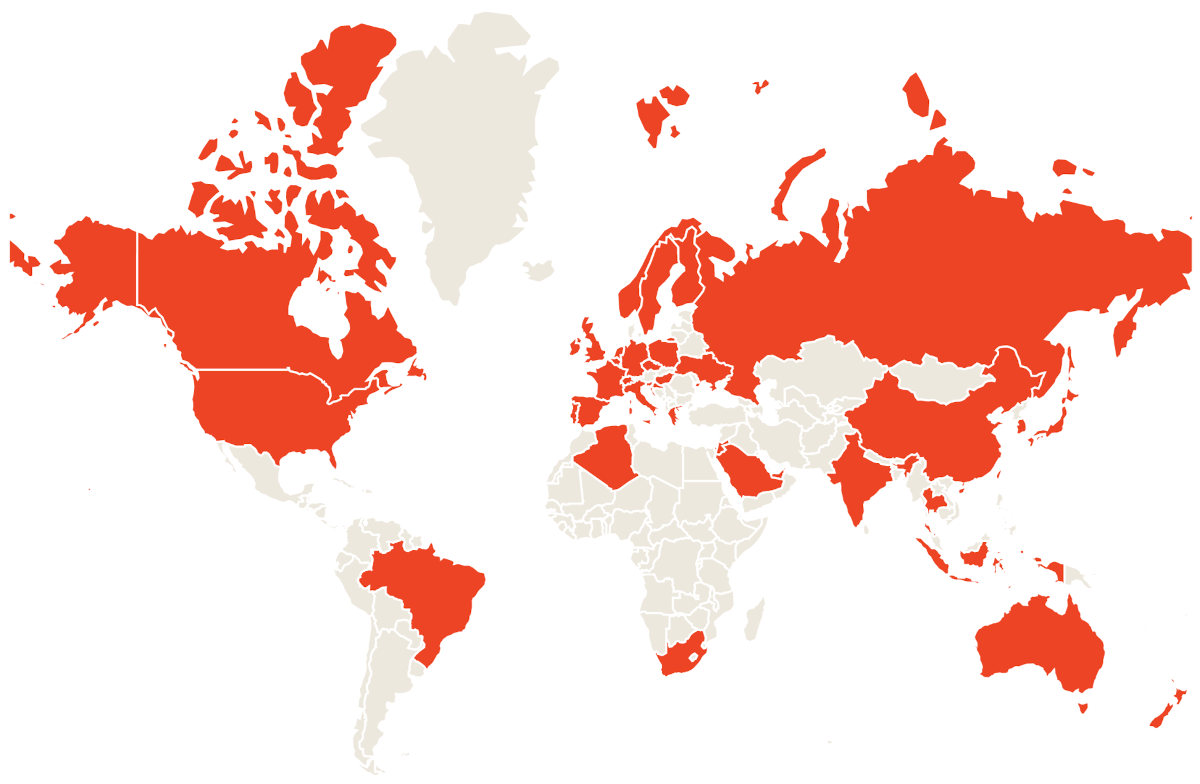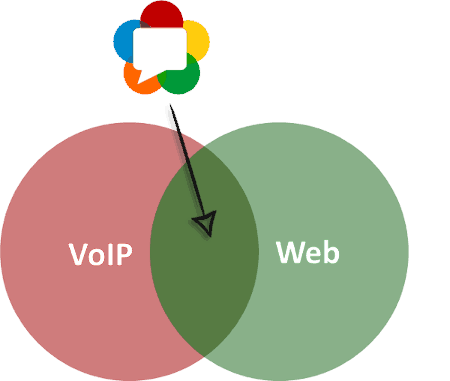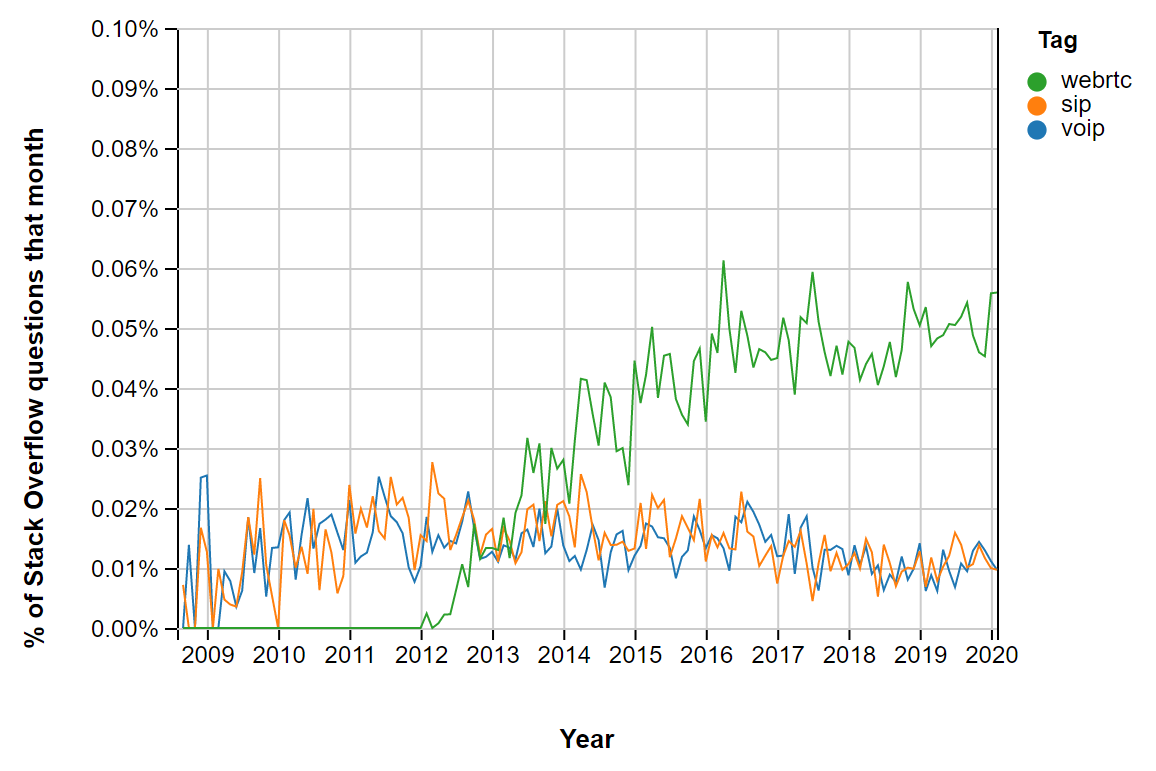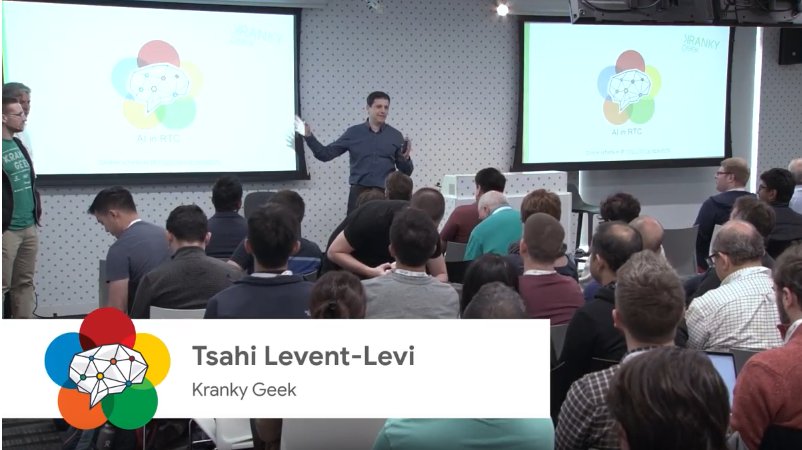
In the next 8 minutes you'll discover the shortest route to entering a domain that is accelerating faster than any other these days. Take your development skills and focus them on WebRTC, a technology niche that will give you employment stability for the next 10 years and can upgrade your salary to $20,000-$30,000 a month, working in the leading companies in the world!
COVID-19 has created a huge demand for remote communication services based on the WebRTC technology. Companies such as Microsoft, Google, Amazon, Facebook and Apple make use of WebRTC and are in constant need of experienced WebRTC developers. If you were looking for the next thing to excel at, or are looking to grow your career, joining a new company or starting exciting new initiatives, then this is the opportunity you've been waiting for!
Hi and thank you for stopping by to read this article. I am Tsahi Levent-Levi, the W3C’s WebRTC Evangelist.
I began learning WebRTC after 13 years of working at a video conferencing company. Assuming that you’ve used a VoIP phone some time before 2015, there's a high probability that my code was running there.
I started out as the youngest developer in the company. I loved being a developer in the software communication domain. Throughout the years, I’ve moved up the professional ladder within the company, shifting from development to team leader, project manager, product manager, and finally, CTO of my business unit.

After many years of assisting hundreds of companies and developers around the world in their quest to create WebRTC-based products and services, I have decided to share my knowledge and expertise with you. This technology is slated to become very popular in the coming years so learning more about it now and becoming an expert when WebRTC use explodes in the tech world will be one of the best decisions you ever made!
What you'll learn in this article:
What is WebRTC anyway?
WebRTC is a relatively new browser technology that enables sending real time voice, video and data directly from one browser to another (or towards a media server). If you are trying to develop a live communications experience that works on the web through a browser, then WebRTC is what you need.
As a technology, WebRTC requires a slew of servers to get it to work: a signaling server, NAT traversal servers (STUN and TURN) as well as media servers if you're thinking of group calling or recording.
WebRTC is available today in all modern web browsers: Google Chrome Apple Safari, Microsoft Edge and Mozilla Firefox.
If you're wondering who is using it, then the simplest answer is that almost everyone. From unified communication giants such as Microsoft and Google, towards social network vendors like Facebook and Discord. And the reasons for this wide adoption are simple:
- The technology itself has been open sourced by Google
- WebRTC is available in all web browsers, making it common place
COVID-19 and the future of WebRTC
The pandemic got the whole world to quarantine at home and start using digital communications more. We've all been using video calls a lot more than we used to, with millions of people getting educated about the potential and advantages of this technology.
The result? We've been thrown 5-10 years into the future in terms of where the demand is and now the technology and availability of products need to catch up.
Companies have been rushing their roadmap or shifting focus to meet with this growing demand. And this isn't going to change any time soon. The world is a new place now. While we might not see the huge spike of use during the quarantine period, we will definitely see a distinct rise of use of digital communication technologies.
Video conferencing and other digital communications are going to stay a hot trend 🔥 for years to come.
Nice to meet you. I am Tsahi Levent-Levi, the WebRTC Evangelist.
When WebRTC came into the world in 2011, I immediately knew nothing would ever be the same. Two things turned my world upside down:
- I understood that everything I’ve learned and worked on up until that day just died!
- Software communication has changed forever, and whoever isn’t going to get on the bus is going to miss the ride and its biggest opportunities.
I started to research WebRTC thoroughly and start the first blog on the subject - BlogGeek.me - which turned into one of the leading sources of WebRTC information in the world.
As the technology improved, more and more people started to take an interest in it. Google’s own product manager of WebRTC at the time, Serge Lachapelle, approached me with a request to access some of the data on WebRTC that I had collected. Later on, I founded Kranky Geek, the main event for WebRTC developers, with him. Developers from all over the world attend this event to meet and get updates on what companies are doing today with WebRTC, learning from their experiences.
After leading several on-site WebRTC trainings, I understood that I can’t really spread the word and train enough developers about WebRTC only through on-site training sessions. “Evangelizing” WebRTC meant doing more, which led me to the creation of the most comprehensive and up to date WebRTC course in the market today - my Advanced WebRTC Architecture Course.
Today, with 600+ students from over 100 companies who have taken my WebRTC training, I can say that the satisfaction I get from the feedback of developers taking the course and the tools and experience they derive from it is a source of of pride. Seeing people develop unique WebRTC services and getting them to production with the help of my course - that’s priceless to me.
Here’s where you can find my WebRTC students around the globe.

There’s a huge demand in the market. I’ve been getting steady requests through my blog from employers looking to hire WebRTC developers to build their products. There aren't enough skilled hands to fill it. At the moment there are just 20,000 with some WebRTC expertise and the demand is just rising.
If you are
Then this is definitely for you!
The 2 biggest challenges of anyone who wants to learn WebRTC
I’ve been speaking to a lot of developers and entrepreneurs who are actively interested in WebRTC. Here are the two biggest challenges that I see today:
1. WebRTC DIY syndrome
Most developers come to me when their managers ask them to build something with WebRTC. Usually, this is after they decided to research the topic and learn on their own. Sometimes, they have already invested $100 on a Udemy course - in many cases their employer funds their training. Such approaches fail: The information on the Internet about WebRTC isn’t organized, is usually not up to date, and sometimes it's just plain wrong. This causes a developers to make mistakes that risk projects, cost money, take precious time or even bring to a loss of job.
Most of my calls and meetings sound the same:
You start off enthusiastic, willing to invest the time and energy. You sit, intently watching the video lessons and learning. But then you try the sample provided in the course and something doesn’t click - the sample doesn’t work. One attempt, a second, a third. You try to figure out how to fix that codebase, finally getting to the realization that the course isn’t up to date. It also doesn’t include a lot of the aspects that go into real WebRTC development and only focus on that “Hello World” example. All that wasted time, money, and effort gone down the drain.
If you are reading this and wondering which WebRTC training course is for you, I suggest you do one thing and one thing only: check the date that the course was updated.
I’ll wait here while you’re looking.
If the course isn’t from the last 12 months, it is no longer relevant.
2. WebRTC is multidisciplinary
WebRTC is pretty confusing as a technology. Learning only its API surface or what’s written in the standard isn’t nearly enough to build a product with it.
Learning WebRTC on your own is hard. There is no single place where you can get all that training you need in a “linear” fashion.
The reason for that probably stems from where WebRTC is located:

Developers who take up WebRTC come from one of these routes – they either have a solid VoIP background, but know little about web development; or more often than not – they know how to create web apps but know very little about VoIP. This brings about two different software development disciplines with very different software developers. And it is there where the real challenge lies.
Add to that the ever-changing nature of WebRTC, the need to learn about media compression, media processing, signaling, standardization, implementations, and ecosystem - and it is obvious why this technology is so difficult to learn without professional guidance.
What is the big opportunity for you?
The world has changed. We are now more focused on remote work, remote assistance and the virtualization of many aspects of our infrastructure and ecosystem. Industries are shifting from pure face-to-face interactions to augmenting them with video communications. This includes healthcare, education, gaming and many other verticals.

WebRTC is the cornerstone and underlying technology in this shift. We are moving away from pure VoIP towards WebRTC, as the stackoverflow trends chart above indicates. The interest in it is growing along with the demand for WebRTC experts, but there aren't many experienced WebRTC developers out there. WebRTC is a very lucrative niche.
By learning WebRTC, you will be able to:
If you are working in the communications IT industry and don't have deep WebRTC knowledge and understanding, then you are missing the bus. And if you are looking to find a growing industry that isn't over-hyped and crowded by developers already then WebRTC is the place for you to be.
Why is this WebRTC course considered the best one in this field and how can it help you with your project?
Here’s what a few of the people who took my course have to say about it:

Onur Özen
Director and Head of Product, Adeya
Advanced WebRTC Architecture course prepared by Tsahi is one of the comprehensible, well-structured and simplified WebRTC sources that we have ever encountered. The course is an invaluable asset for anyone who would like to understand and invest time in WebRTC.

Heather Young
Dev/Ops & Process Guru, &yet
The course is well laid-out and current. I work with this technology in an Ops capacity, so it’s great to learn this material more thoroughly rather than piecemeal from my co-workers as I have been.

Fredrik Johansson
Software engineer, Tobii AB
This course is very convenient to get a “linear walk-through” of WebRTC, so I don’t get lost in a sea of more or less important information. Complementing that with some links for each lesson is also very good.

Kalyan K Pasumarthy, PhD
CEO, Shri Services Oy | Swapicom
WebRTC course from Tsahi is the best place to start for anyone who wants to understand the concept, intricacies or develop WebRTC apps. The course has various modules starting with conceptual understanding (non-technical) to technical intricacies influencing the connectivity & quality of WebRTC.
Tsahi's expertise with VoIP and deeper understanding of the WebRTC is a great combination for every VoIP business seeking transformation. The best part of the course is the office hours conducted every fortnight, where Tsahi personally explains the concepts and gives the opportunity to ask any question in the context of VoIP & WebRTC.

Erik Cumps
NUCLeUS System Architect, eSaturnus
The video lessons have the right amount of information. The split up (modules) and the pacing is also good. I also like the additional reference documents.
After taking the course I had a much improved and clear understanding of what webRTC is and how it is intended to be used. It helped me to work on an architecture incorporating webRTC functionality.

Pankaj Gupta
Founder and CEO, EnableX
We’ve signed up our team to the course and the immediate feedback was very positive. The content and the flow make it easier to learn WebRTC, and there’s a good balance for beginners as well as intermediate level of engineers.

Lantre Barr
CEO & Founder, Blacc Spot Media
Tsahi's course is a great investment that every company building real-time solutions using WebRTC should take. Our entire team enjoyed the course and the one on one time Tsahi provided.

Sakshi Pahwa
Senior Technical Product Manager, Amazon
Thank you for putting in so much time and effort into making this course so helpful. The course has been pretty useful so far and I can’t wait to go on and learn more and apply some of the principles to my work.
What am I most proud of? When people who took my course share their success stories with me. Some have told me they’ve successfully launched their product with the help of my course. Others have taken the course and asked their company to invest further by referring more students to it. A few shared with me that they continue watching specific lessons in the course when their job requires a point solution or better understanding in a specific area (it is always hard to soak up so much information and knowledge in a short timespan).
Where are most of the course students located? They live everywhere…
600+ students from over 100 companies and over 40 countries have enrolled in the course, learned WebRTC, and are using this knowledge to develop WebRTC products.
From a quick search, you’ll find approximately 20,000 people on LinkedIn who show interest in WebRTC. With 600 students, I’d say there are approximately 8% of developers who work with WebRTC that have put their trust in my online WebRTC training.
While I don’t know every single project that was developed with the help of my course, I have learned that WebRTC has become a kind of a calling. So much so that the W3C have appointed me as their official WebRTC Evangelist.
The only true shortcut to guaranteed success in WebRTC
Learn from the experience of others.
Trying alone to figure things out, without learning from the mistakes and experiences of others isn't smart.
There is endless information on the Internet about WebRTC. If you are new to it, you are probably drowning, trying to figure out what works and what doesn't. What's correct and what isn't.
Truth be told - a lot of what you'll find is no longer relevant anyway. WebRTC is evolving really fast.
If you are reading this, then you probably tried running a sample or two that didn't work. Or you are just new to WebRTC and trying to find the most effective and useful path to your success with WebRTC.
The only shortcut is to get a solid, structured WebRTC training from people with experience.
After five years of writing about WebRTC on my blog, I took a few months of planning, developing, and recording to create the Advanced WebRTC Architecture Course. I am updating it ever since.
The purpose: Empowering developers who need to know and use WebRTC in getting the knowledge they require, in the shortest amount of time, to succeed with their WebRTC projects.
What you will learn in this course
There are three main topics the course will teach you:
- What WebRTC exactly is, along with its various components: server types, network protocols, codecs, etc.
- Media architectures, suitable for different use cases. Including group video sessions, live broadcasting, recording and more.
- Review of the various solutions available on the market today - open source and commercial, along with architecture blueprints for common scenarios.
If you've read this article so far, then you are definitely thinking of enrolling to my WebRTC course. The next step is to check if it is truly relevant to you.
You probably have a lot of questions about the course and about me. You want to know when the course starts? What is your investment? See the details and get the answers you need to make an educated decision for you.
There's no pressure here. You are welcomed to join if you find the course suitable to your needs.
Interested to learn more?
Fill out the form below to get to the second part of this article, where you can learn about the course content and the detailed syllabus.

I am waiting for our chat.

